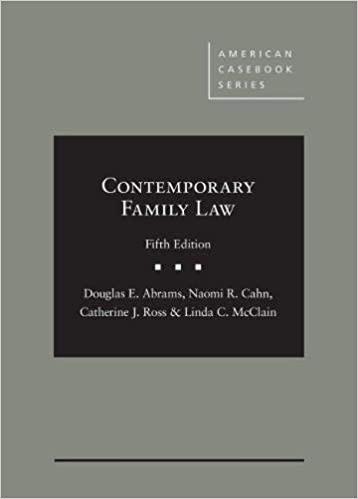Question
[Use the Evidence Act 1995 (Cth or NSW) that is in force at the date of the exam and any relevant case law] QUESTION 1
[Use the Evidence Act 1995 (Cth or NSW) that is in force at the date of the exam and any relevant case law]
QUESTION 1 Answer BOTH parts A and B_ [50 marks]
Part A
Nolan sues his local council for negligence after falling over low logs placed across a grassy area near a beach reserve. He suffered head injuries and slight brain damage when his head struck some rocks on the ground. He alleges that his sight was fixed on a row of large rocks that had been placed a few metres beyond the row of logs. A sign that said "Enter Reserve Here" was next to the rocks, and Nolan claims this diverted his attention from the logs. The council is defending the claim, and alleges Nolan was not looking where he was going.
Nolan's lawyer calls a paramedic who attended the scene and offered assistance to Nolan. He filled out an incident report form. In response to the question "Cause of accident", he wrote the words: "Tripped over concealed logs ???!!!". The trial judge admits the report, despite objections, as evidence of how the accident happened.
Nolan's lawyer also calls a visual perception analyst, Wesley, to give evidence. Wesley has worked for the Army, advising and training military personnel on watching out for land mines and other land surface hazards. He has qualifications in optometry and psychology. In his examination in chief, Wesley gives evidence that he has acted as a consultant on safety, and matters involving human perception of linear hazards and spaces, for several government agencies, theme parks and sporting venues. He considers himself an "ingress and egress expert" in visual perception analysis, gained through experience after his military work.
Wesley's evidence is that the presence of the row of rocks and the spaces between them detracted from the visibility of the logs, thereby posing a significant risk of tripping and falling. He says the logs would not have been visible to Nolan, whose visual perception was naturally focused on the rocks, particularly because they were marked as representing the entrance to the reserve. Further, because the logs were low, and in relevant places covered by grass, they were relegated only to Nolan's peripheral vision.
In cross-examination, it transpires that Wesley did not visit the site in question for the purposes of this report, and that he worked from photographs. However, he claims to be familiar with the area because he has holidayed there with his family. Further, he interviewed Nolan about the accident, but did not engage in any visual testing. His testimony is that it would make no difference if he had visited the site or put Nolan through some tests, because he had "seen many cases like this before".
When asked why people might stop looking where they are walking once they see their destination in sight, he replies: "Believe me, this is a well-known phenomenon in visual perception studies. It is well-documented in the literature and I have referenced that literature in my report." Asked to explain how he came to his conclusions, Wesley replies "Well, I've set out all my conclusions in the report. No one has suggested that I'm wrong." The council's barrister says "No more questions, your Honour."
The council's barrister argues that the report should not be admitted and that, even if it is admitted, Wesley's evidence has low probative value. He says Wesley could only be seen as an "expert in walking in and out of parks", and that this is a matter of common knowledge for which an expert is not required.
Finally, the council calls the independent witness who rang for an ambulance, Lilibet, who is an elderly local resident. She gives evidence that she was leaning on her front fence across the road and saw Nolan approach the entrance to the reserve. She says she saw Nolan approach the logs and then look up to observe a herd of screeching cockatoos as he walked ahead. Nolan's legal team have reason to believe Lilibet is sight-impaired.
Address the following issues:
- What could the respective parties argue in relation to the admissibility of Wesley's testimony and report? [15 marks]
- Should the trail judge have admitted the paramedic's report? [10 marks]
- On what basis could Nolan's counsel pursue the issue of Lilibet's eyesight? [10 marks].
Part B
Alda is dismissed as a director of a private company. A fellow director, Brenda, saw Alda alter a document. Brenda inspected the document about an hour later and realised Alda amended it to authorise the transfer of a parcel of company-owned land to her private family trust. Brenda immediately rang another director, Carson, who then told his wife Delta. The company refers the complaint against Alda to the police, who charge her with dealing fraudulently with company assets.
By the time of Alda's trial, Brenda had passed away from complications following a Covid-19 infection.
In relation to Alda's actions, comment on the nature and admissibility of evidence that could be given by Carson and Delta respectively. [15 marks]
Step by Step Solution
There are 3 Steps involved in it
Step: 1

Get Instant Access to Expert-Tailored Solutions
See step-by-step solutions with expert insights and AI powered tools for academic success
Step: 2

Step: 3

Ace Your Homework with AI
Get the answers you need in no time with our AI-driven, step-by-step assistance
Get Started


